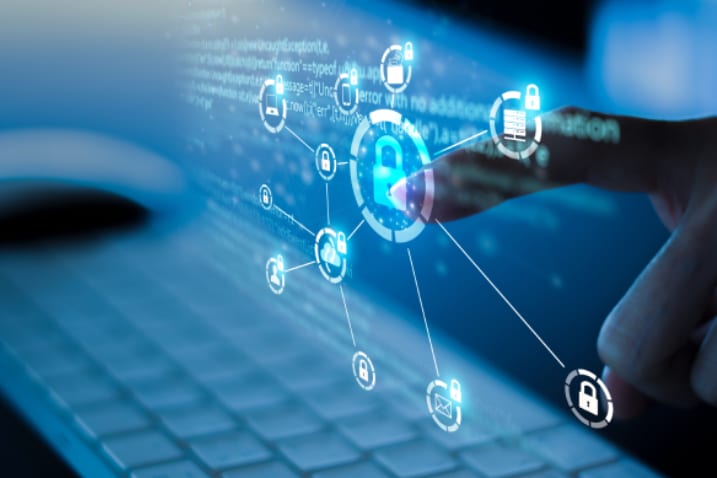How to Prevent Cyber Physical Attacks

Now that we have interconnected devices and smart technology, the risk of cyber physical attacks has escalated. These attacks can have severe consequences, ranging from disrupting critical infrastructure to compromising personal safety. As more industries and individuals become reliant on technology, it's crucial to understand how to prevent and protect against these attacks.
Preventing cyber physical attacks requires a combination of awareness, preparedness, and proactive measures. By implementing effective strategies and staying informed about emerging threats, individuals and organizations can minimize their vulnerability and safeguard against the devastating consequences of cyber physical attacks. In this blog, we will explore the different types of cyber physical attacks, how they work, and prevention strategies that you can consider to enhance your cybersecurity and prevent these attacks from occurring.
Key Takeaways
- Cyber physical attacks are a growing threat, targeting both digital and physical systems, so it’s important to have strong security in place across all areas.
- There are different types of cyber physical attacks, from network-based to hardware-based, and each requires a different approach to protect against them.
- You can stay ahead of cyber physical threats, with strategies like regular testing, patch management, and keeping networks segmented can really help.
- A cloud-based access control solution for enterprises and large corporations is a game changer, providing scalability, security, and flexibility for better protection.
- LenelS2’s security solutions are tailored for various industries, offering the right tools to protect your assets and ensure your organization stays safe from cyber physical threats.
What Are Physical Threats in Cybersecurity?
Physical threats in cybersecurity refer to risks that involve direct harm to hardware or infrastructure. For example:
- Stolen laptops can lead to data breaches if they contain sensitive information.
- Gaining unauthorized access to secure areas can allow malicious actors to tamper with systems.
- Deliberate damage to hardware, like cutting power or breaking servers, can disrupt business operations.
- Natural disasters, such as floods or fires, can wipe out important infrastructure.
- Bad actors can manipulate employees into breaking security protocols, also known as social engineering.
These physical threats are often combined with digital threats to create "cyber-physical attacks," which can target both the physical and digital systems simultaneously. Let’s take a look below.
What is a Cyber Physical Attack?
Physical attacks typically focus on targeting an organization's tangible assets, such as buildings, equipment, or infrastructure, while cyber attacks exploit vulnerabilities in digital systems, such as networks, software, or databases. However, physical security devices are often digitally connected, creating risks for teams with a weak cybersecurity policy in place. Cyber physical attacks represent a unique and concerning category as they aim to exploit vulnerabilities in both the digital and physical domains simultaneously.
By targeting interconnected digital and physical systems, cyber physical attacks pose an elevated level of risk, potentially resulting in significant operational disruptions, financial losses, and compromise of sensitive data or physical safety. It’s crucial for organizations to implement robust physical and cybersecurity measures to safeguard against these threats and protect their assets.
How Do Cyber Physical Attacks Work?
Cyber physical attacks exploit vulnerabilities in both digital and physical systems, often combining various techniques to achieve their objectives. Attackers may infiltrate insecure networks, inject malicious code into software, or exploit hardware weaknesses to compromise an organization's security.
The Risk of Cyber Physical Attacks on Your Organization
Organizations must recognize that their security is only as strong as their weakest link. A single vulnerability in the network, software, or hardware can serve as an entry point for attackers. That means that a thorough security plan is paramount for protecting your organization against cyber physical attacks.
What are the Types of Cyber Physical Attacks?
Cyber physical attacks encompass a range of techniques that exploit vulnerabilities across digital and physical domains, posing significant cybersecurity threats to three main components which are software, hardware, and network. Here are six common types of cyber physical attacks that usually target the three components:
- Network-based attacks
- Software-based attacks
- Hardware-based attacks
- Zero-day attacks
- Side-channel attacks
- Insider attacks
1. Network-Based Attacks
Network-based attacks focus on exploiting vulnerabilities in an organization's network infrastructure, such as weak access controls or a lack of effective intrusion detection systems. Even with other security measures in place, an insecure network can act as a vulnerable entry point for attackers, enabling them to compromise systems and do significant damage.
Replay Attacks
In a replay attack, an attacker intercepts data (such as authentication credentials) in transit between a legitimate user and the targeted system, then replays the same data later to gain unauthorized access.
2. Software-Based Attacks
A software-based attack refers to a type of cyber attack that targets vulnerabilities in software applications or systems. In such attacks, hackers exploit weaknesses in software code or configuration to gain unauthorized access, compromise data, or disrupt the normal functioning of the software. These attacks can take various forms, including but not limited to:
Data Injection Attacks
Data injection attacks involve injecting malicious code or unauthorized commands into a system to manipulate its behavior, steal sensitive information, or disrupt operations.
Denial of Service Attacks
Denial of Service (DoS) attacks overwhelm a target system with a flood of requests, rendering it unable to function properly and causing disruption to business operations.
3. Hardware-Based Attacks
Hardware-based attacks leverage vulnerabilities in physical components like processors or USB devices to compromise systems and gain unauthorized physical access. These vulnerabilities can stem from design flaws, manufacturing defects, outdated firmware or software running on the hardware, or inadequate security measures. Here are two examples of hardware-based attacks:
USB-Based Malware
Attackers can use USB devices to spread malware onto a computer or network by exploiting the trust the device has within the system.
Firmware Attacks
Vulnerabilities in the firmware of a device, such as a router or printer, can be exploited to execute malicious code, allowing attackers to gain control over the system.
4. Zero-Day Attacks
Zero-day attacks pose a significant threat, as they exploit unknown vulnerabilities in software or hardware systems, leaving organizations defenseless due to the absence of available patches or fixes. Two examples of zero-day attacks include:
Stuxnet Worm
One of the most famous zero-day attacks, Stuxnet was designed to target programmable logic controllers (PLCs), exploiting vulnerabilities in Siemens software which was successfully mitigated without any negative impact on the systems of 22 customers.
Google Chrome Vulnerability
In 2024, a zero-day flaw in Google Chrome was discovered, where attackers could exploit a memory corruption issue in the browser’s V8 engine through a malicious HTML page, putting system security at risk.
5. Side-Channel Attacks
Side-channel attacks leverage information leaked during the normal operation of a system, such as power consumption or electromagnetic emissions, to infer sensitive data. By analyzing these unintended side-channel signals, attackers can gain insights into cryptographic keys, passwords, or other confidential information. Some examples include:
Power Analysis Attacks
Power analysis is an attack where an attacker monitors the power usage of a cryptographic device. They measure small changes in voltage caused by electric currents, which can reveal a small amount of information about the data being processed.
EM (Electromagnetic) Attacks
By monitoring electromagnetic emissions from devices, attackers can extract sensitive information, such as encryption keys, without physically accessing the system.
6. Insider Attacks
Insider attacks refer to situations where employees with heightened privileges act maliciously either independently or on behalf of a malicious party. To protect against such threats, strict access control rules, the principle of least privileges, and role-based access control (RBAC) policies are vital safeguards. Here are two examples of insider attacks:
Data Theft by an Employee
An employee with access to sensitive customer information may steal data to sell it to competitors or use it for personal gain.
Sabotage by Disgruntled Staff
An employee with privileged access might intentionally corrupt files, delete records, or cause system downtime as a form of retaliation or revenge against the company.
How to Prevent Cyber Physical Attacks
Mitigating the risks of cyber physical attacks requires a combination of cutting-edge technology, industry expertise, and collaboration with trusted partners. Here are nine key strategies for providers and customers to implement to protect themselves from cyber physical attacks:
- Cloud-based access control
- Regular testing
- System hardening
- Identifying vulnerabilities
- Security by design
- Regular updates and patches
- Segmentation of networks
- Employee training and awareness
- Backup and restore processes
1. Cloud-Based Access Control
On-premises access control requires organizations to take responsibility for implementing proper security measures. While vendors like LenelS2 offer hardening services and provide recommendations, they cannot guarantee that customers will consistently follow these measures. It becomes the organization's responsibility to secure their networks, environments, hardware, and software.
In contrast, cloud-based access control solutions offer a different approach. Providers like LenelS2, through offerings such as the Elements solution and OnGuard Cloud, take responsibility for applying the latest patches and fixes. Even though the customers are still required to harden their networks, they can rely on the provider to ensure that their cloud-based access control system is continuously updated and protected.
2. Regular Testing
Regular testing plays a vital role in maintaining a robust security posture against cyber physical attacks. By conducting comprehensive and periodic penetration tests, organizations can proactively identify vulnerabilities in their systems and infrastructure. These tests simulate real-world attack scenarios to uncover weaknesses that could be exploited by malicious actors. In addition to penetration testing, dynamic testing on web endpoints is crucial to assess the security of web applications and components, ensuring that they are resilient against potential threats.
3. System Hardening
To reinforce the security of their systems and protect against potential cyber physical attacks, organizations should also consider additional system hardening practices such as regular patch management, disabling unnecessary services, and implementing secure configurations based on industry best practices. By adopting these measures, organizations can significantly reduce their exposure to vulnerabilities and bolster their overall defense against cyber physical threats.
4. Identifying Vulnerabilities
Identifying vulnerabilities in their own software and systems is a crucial task for organizations to maintain a strong security posture. This can be achieved through various methods, including regular security audits, penetration testing, vulnerability scanning, implementing security information and event management (SIEM) systems, establishing bug bounty programs, and collaborating with security experts. By combining these approaches, organizations can proactively detect potential vulnerabilities and protect their valuable assets and data.
5. Security by Design
Applying security by design is essential for organizations to embed security considerations into their software and system development processes. This involves incorporating security as a fundamental aspect of the design and development phases, rather than treating it as an afterthought. By integrating security requirements, threat modeling, and secure coding practices from the early stages of development, organizations can proactively identify and address potential security vulnerabilities.
6. Regular Updates and Patches
Regular updates and patches are critical components of a strong cybersecurity strategy for organizations. Keeping software, operating systems, and applications up to date is essential to address known vulnerabilities and protect against potential threats. Software vendors and developers release updates and patches to address security vulnerabilities, improve functionality, and enhance overall system stability. By promptly applying these updates, organizations can mitigate the risk of cyber attacks that exploit known weaknesses.
7. Segmentation of Networks
Segmenting networks is a vital practice in minimizing the potential impact of a cyber physical attack. By isolating critical systems into separate network segments and implementing strong access controls, organizations can limit the lateral movement of attackers within their infrastructure. This segmentation helps contain the impact of an attack, preventing unauthorized access to sensitive assets and reducing the potential for widespread damage or compromise across the entire network.
8. Employee Training and Awareness
Security awareness training for employees play a crucial role in maintaining a strong cybersecurity posture within organizations. It is essential for employees at all levels to be educated about the latest security threats, best practices, and policies to mitigate the risks of cyber attacks. By providing comprehensive cybersecurity training programs, organizations can empower their employees to recognize and respond effectively to potential security incidents, such as phishing attempts, social engineering tactics, or suspicious network activities.
9. Backup and Restore Processes
Backup and restore processes ensure that critical data and systems can be recovered in the event of an attack or compromise. By regularly backing up data and having a robust restore process in place, organizations can minimize the impact of an attack and quickly recover their operations. This strategy helps to mitigate the potential loss of critical information, minimize downtime, and maintain business continuity
Applying Security Measures in Industrial Systems
LenelS2 understands the diverse needs of different industries and tailors their security solutions accordingly. By leveraging their expertise, they provide industry-specific security measures to ensure the protection of critical infrastructure. Here are some notable case studies showcasing LenelS2's successful implementations:
Commercial Buildings & Office Spaces
LenelS2 has played a crucial role in securing commercial buildings (such as One Post Office Square). Through their comprehensive access control solutions, they have provided robust security measures to protect the building's occupants, assets, and sensitive data. By addressing potential cyber physical threats, LenelS2 helps commercial buildings maintain a safe and secure environment for employees, tenants, and visitors.
Healthcare
In the healthcare industry, protecting sensitive patient data, maintaining facility security, and safeguarding critical assets are paramount. LenelS2's security solutions have been implemented by leading healthcare organizations, including Alexion Pharmaceuticals. By utilizing LenelS2's robust access control and cyber physical security measures, healthcare facilities can mitigate the risks of unauthorized access, data breaches, and potential disruptions to critical operations.
Education
LenelS2 recognizes the unique security challenges faced by educational institutions. Open campuses, diverse user populations, and the need to safeguard valuable resources require tailored security solutions. LenelS2 has provided security solutions to improve campus security for schools like Norwich Free Academy, enabling them to secure their campuses effectively. By implementing access control measures, surveillance systems, and other security solutions, LenelS2 helps educational institutions create a safe learning environment for students, faculty, and staff.
These case studies highlight LenelS2's commitment to delivering industry-specific security solutions. By understanding the distinct security requirements of commercial buildings, healthcare organizations, and educational institutions, LenelS2 ensures that their solutions address the unique challenges faced by each industry. Through their expertise and comprehensive approach, LenelS2 helps organizations in various sectors fortify their defenses against cyber physical attacks and safeguard their critical assets and operations.
Implementing a Holistic Approach to Security with LenelS2 Solutions
When it comes to implementing a holistic approach to security, LenelS2 offers a comprehensive suite of solutions that empower organizations to enhance their security posture and protect against cyber physical attacks. What sets LenelS2 apart from its competitors is their extensive automation and integration capabilities, enabling seamless integration with over 200 systems. This integration empowers organizations to create a unified security ecosystem that leverages the strengths of various technologies and maximizes protection.
Contact LenelS2 today and discover the advantages of their advanced security solutions.




